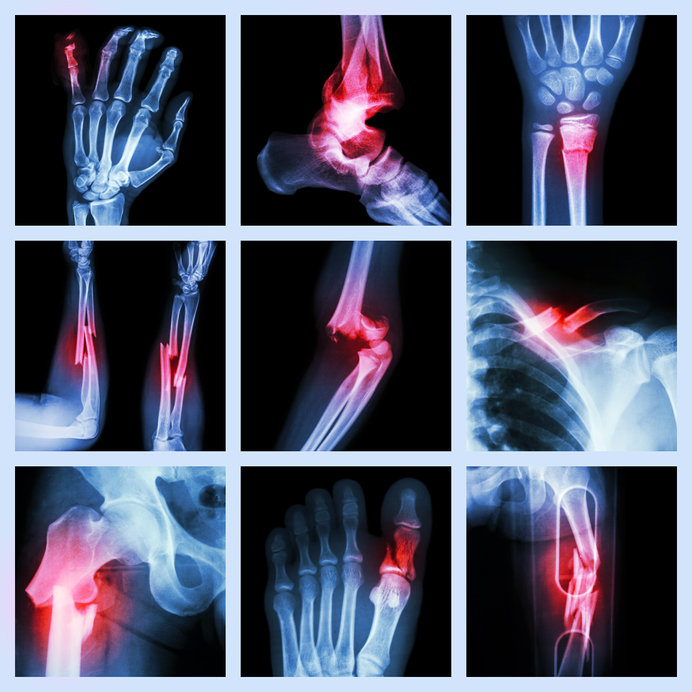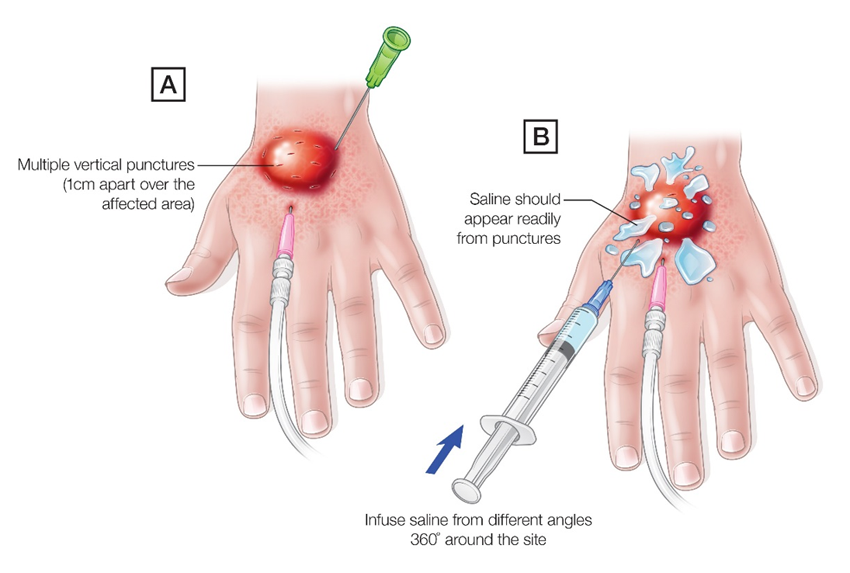
Spotting cardiac problems in younger people in busy emergency departments
8th September 2021
Injuries caused by falls from a height
22nd September 2021It is incredibly important that doctors, nurses, and healthcare professionals closely monitor all cannulated patients for signs of extravasation, a serious complication that can lead to tissue death and, in some cases, amputation. Healthcare professionals carrying out cannula insertions or caring for cannulated patients should be aware of the risk factors that can increase the chances of extravasation, as well as the signs and symptoms of this complication.
What is extravasation?
Extravasation occurs when a irritant solution leaks outside of its intended pathway. This can cause blistering, tissue damage, and even tissue death in severe cases.
It’s important to make the distinction between extravasation and an infiltration injury; the former refers only to leaks involving irritant solutions, while infiltration injuries can be caused by other solutions that do not result in blistering or tissue death. Infiltration injuries often result in soreness, redness, and swelling around the site of cannulation, but can also cause nerve compression and long-term damage in serious cases.
It’s important to look out for both extravasation and infiltration injuries after cannulation to ensure that complications can be treated and damage minimised with early intervention.
The risk factors of extravasation
Certain patients may present with increased risk factors for infiltration or extravasation injuries. Patients at higher risk should be monitored more closely than those at lower risk, though it’s important to monitor all patients post-cannulation regardless. These risk factors include:
• Age: Both very young and very old patients are at an increased risk of extravasation injuries.
• Veins: Patients with small, fragile, or thrombosed veins face an increased risk.
• History of stroke. Patients with altered sensory perceptions post-stroke are at risk of cannula injuries.
• Frequency of cannulation. Repeated use of the same vein increases the risk of extravasation.
• Cannula location/ Cannuals located in certain areas, including the inner elbow crease and the back of the hand, may be more likely to result in injuries.
The signs and symptoms of extravasation injuries
Early identification of extravasation can significantly reduce the amount of tissue damage that occurs, improving long-term patient outcomes and reducing the risks of potentially harmful legal claims. Signs of infiltration injuries, including extravasation, are:
• Coolness or blanching of the skin
• Tight or stretched skin
• Redness, swelling, or tenderness
• Numbness
• A change in the flow of blood or solution
• A tingling sensation
Extravasation might also result in burning and stinging pain, redness followed by blistering, as well as tissue death and ulceration.
How to treat a suspected extravasation injury
Be vigilant, monitoring all cannulated patients closely and react quickly in cases where an extravasation injury is suspected. The catheter involved should initially be left in place while the site of the injury is elevated. If symptoms don’t ease after elevation, the cannulation site may be changed. It’s crucial that all staff members are alerted to a possible extravasation injury so that the correct steps are taken and care is consistent between doctors, nurses, and other staff members.




